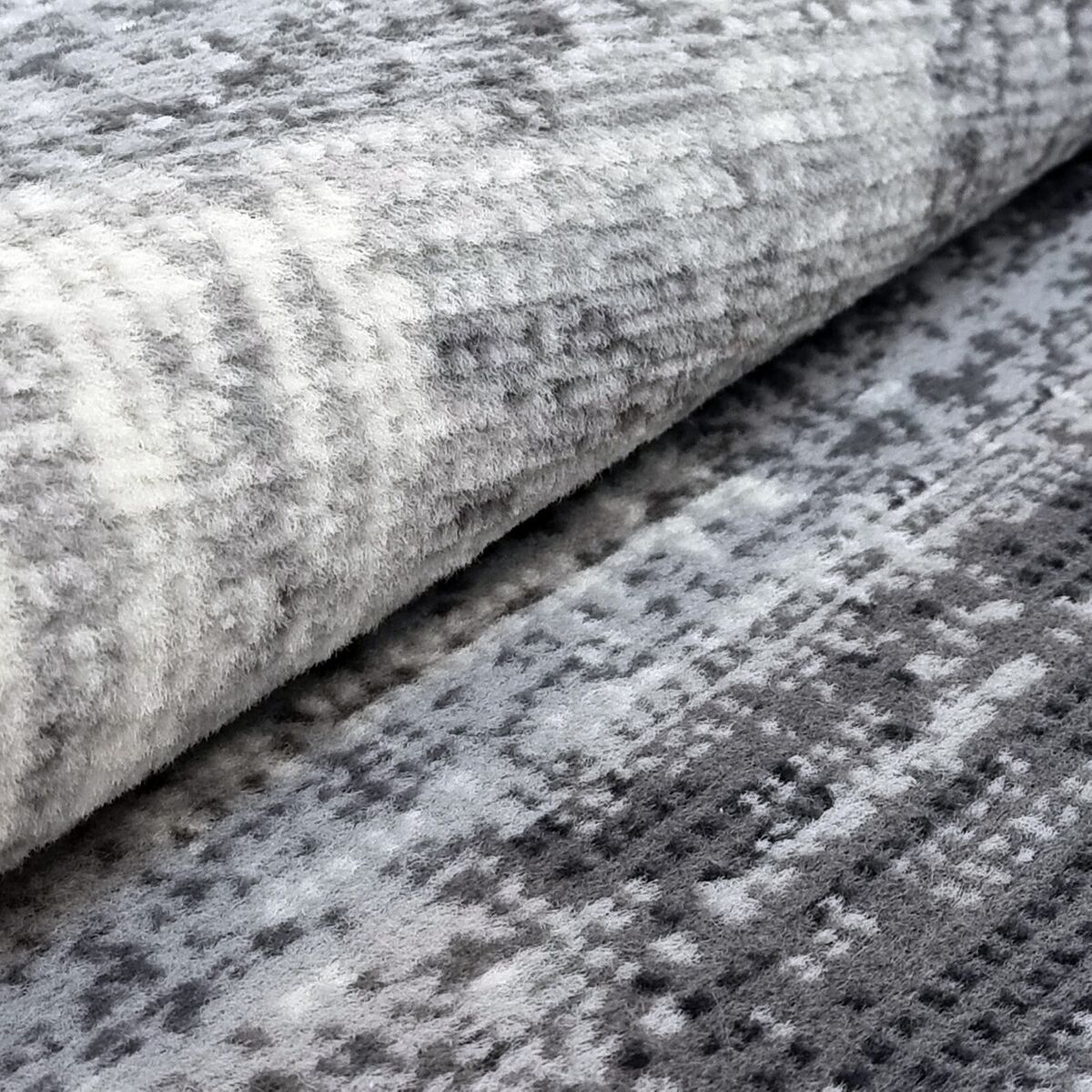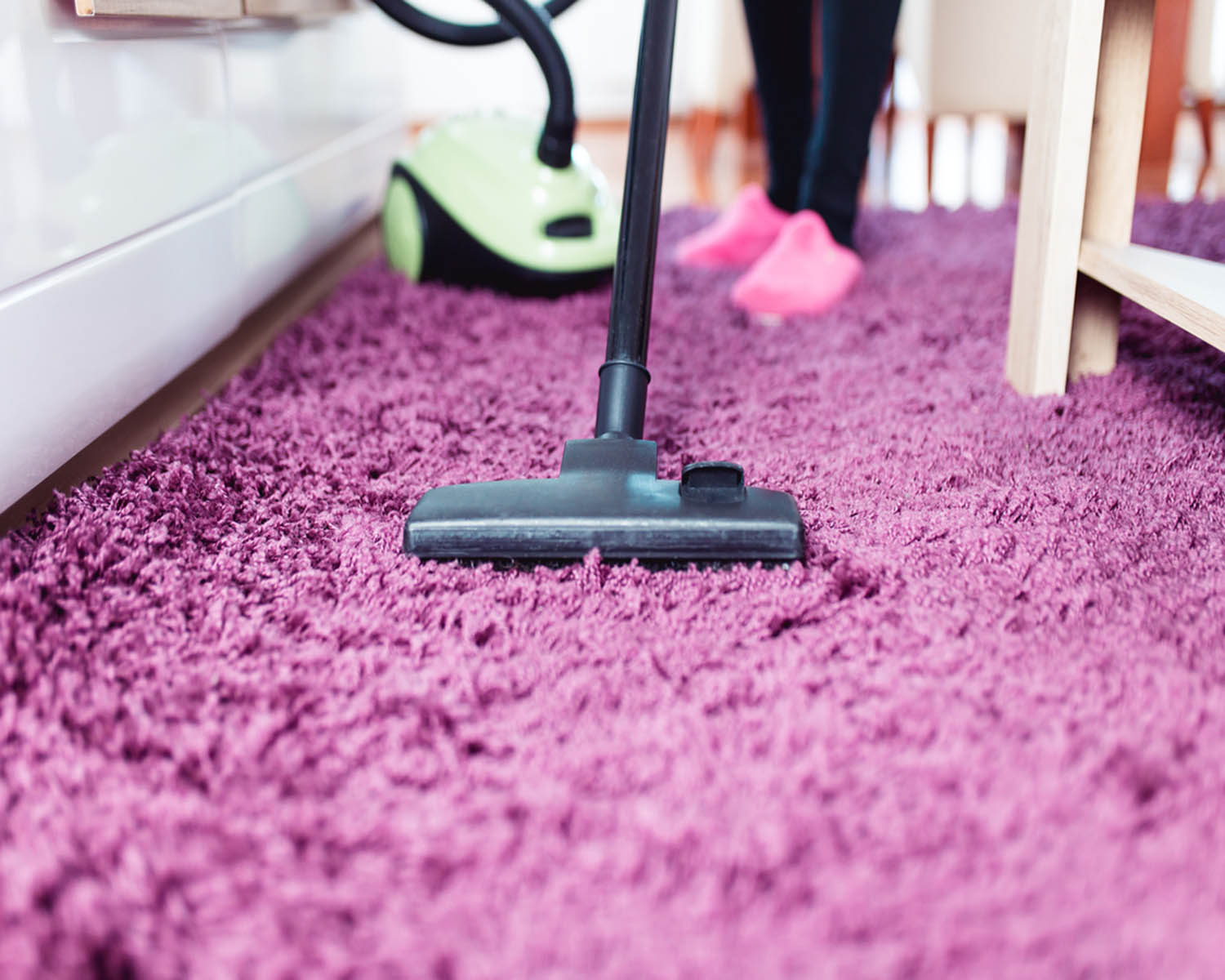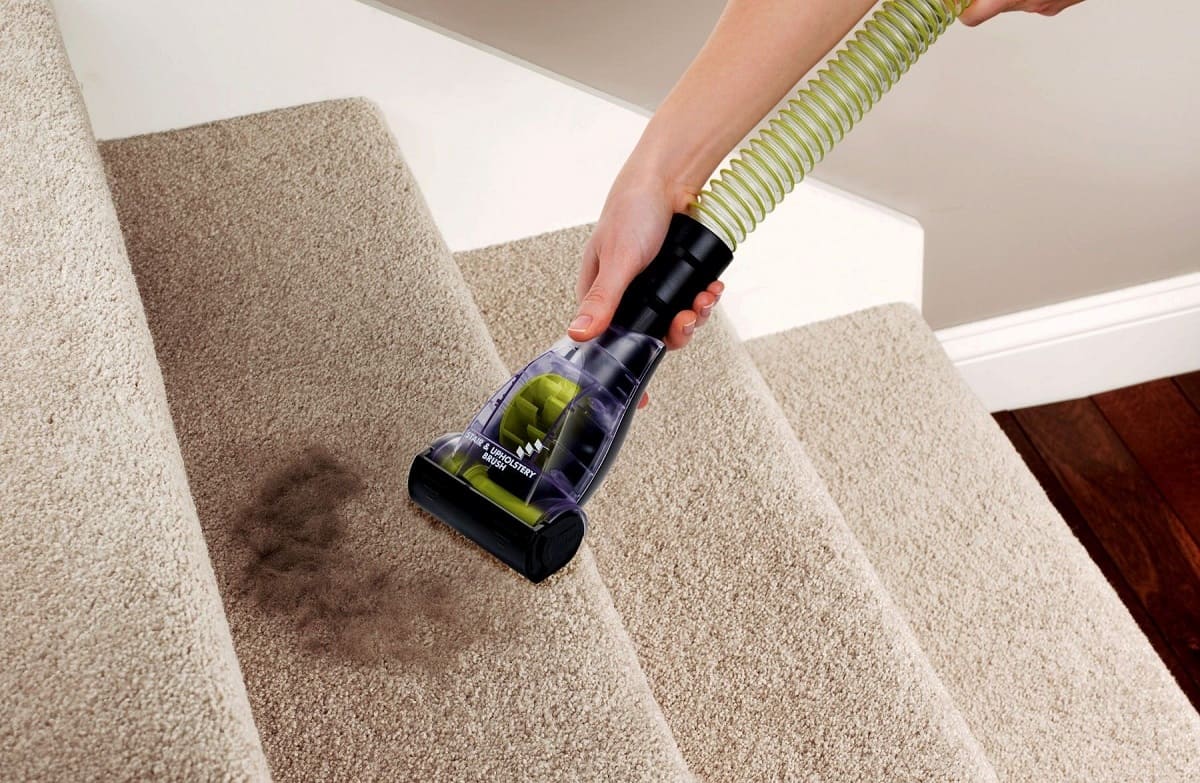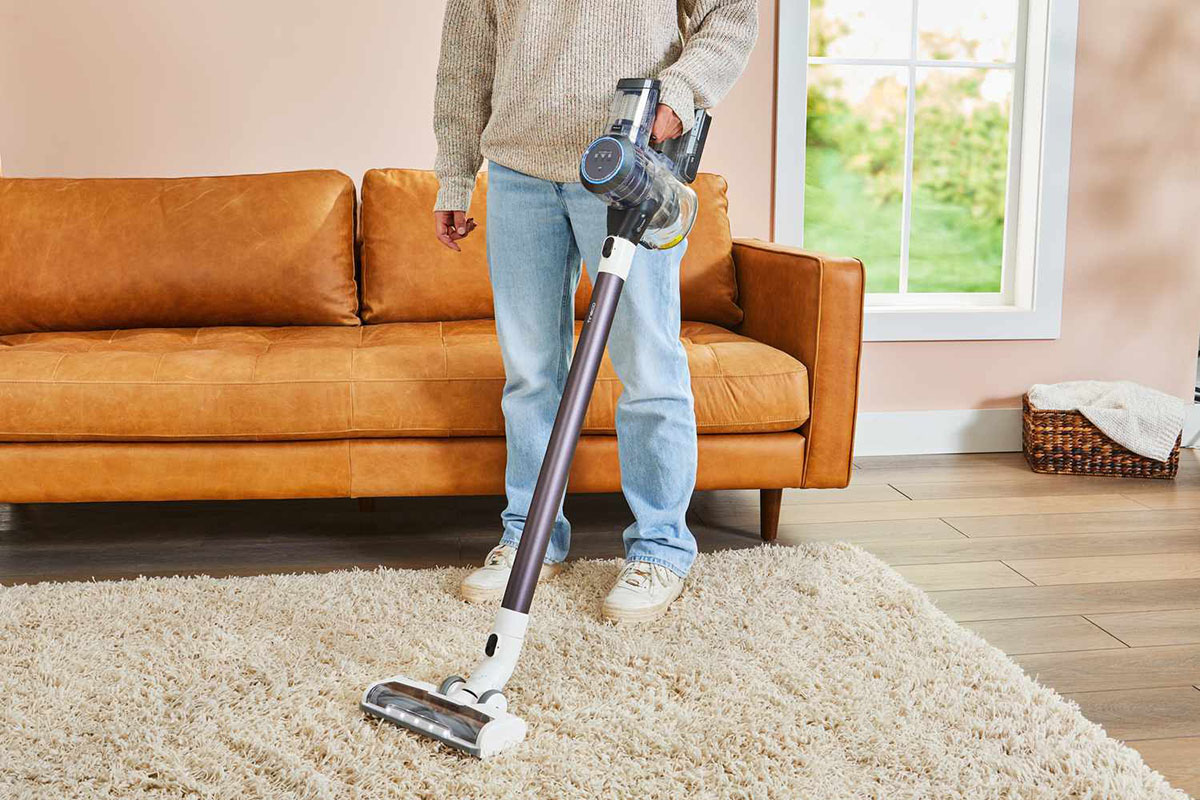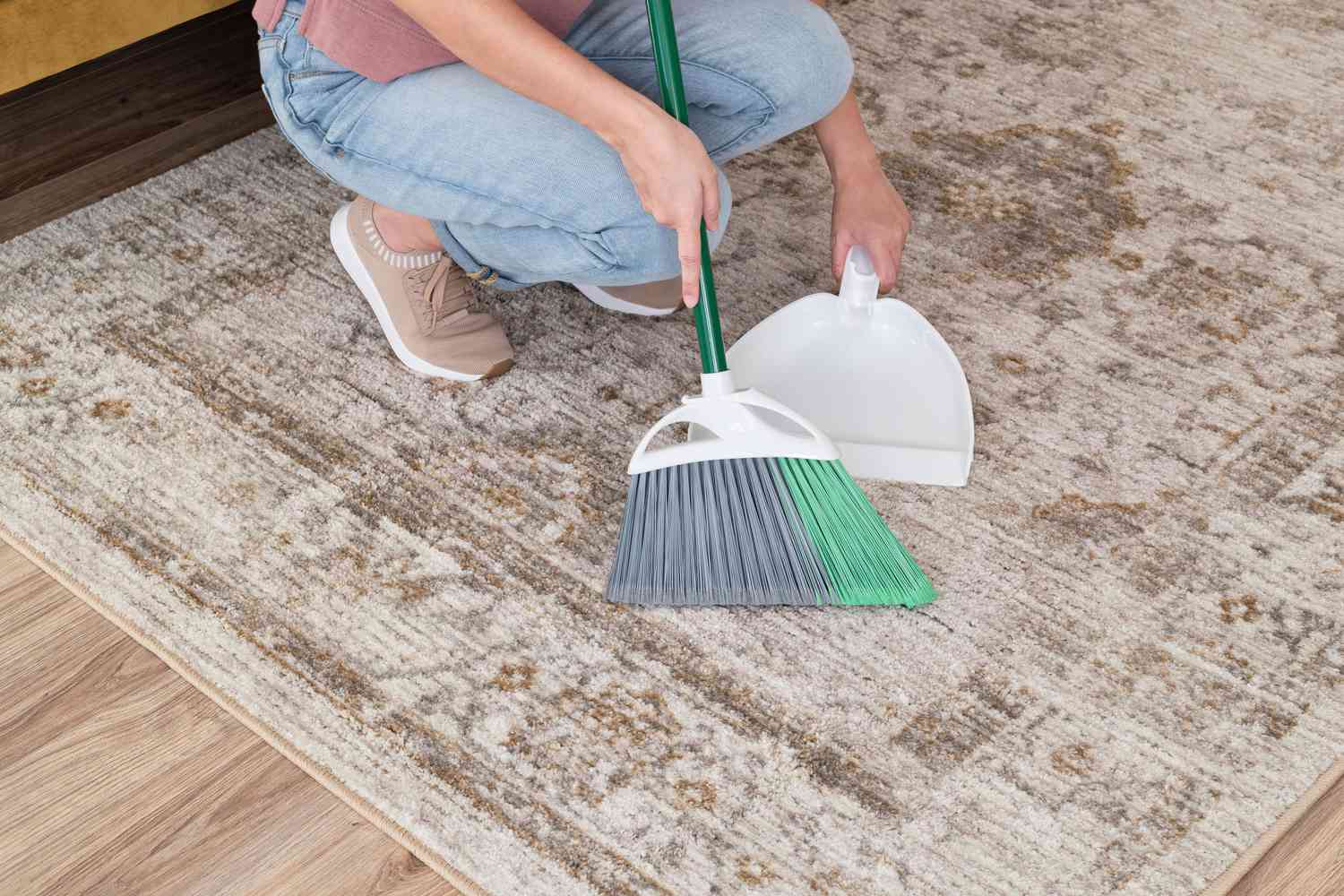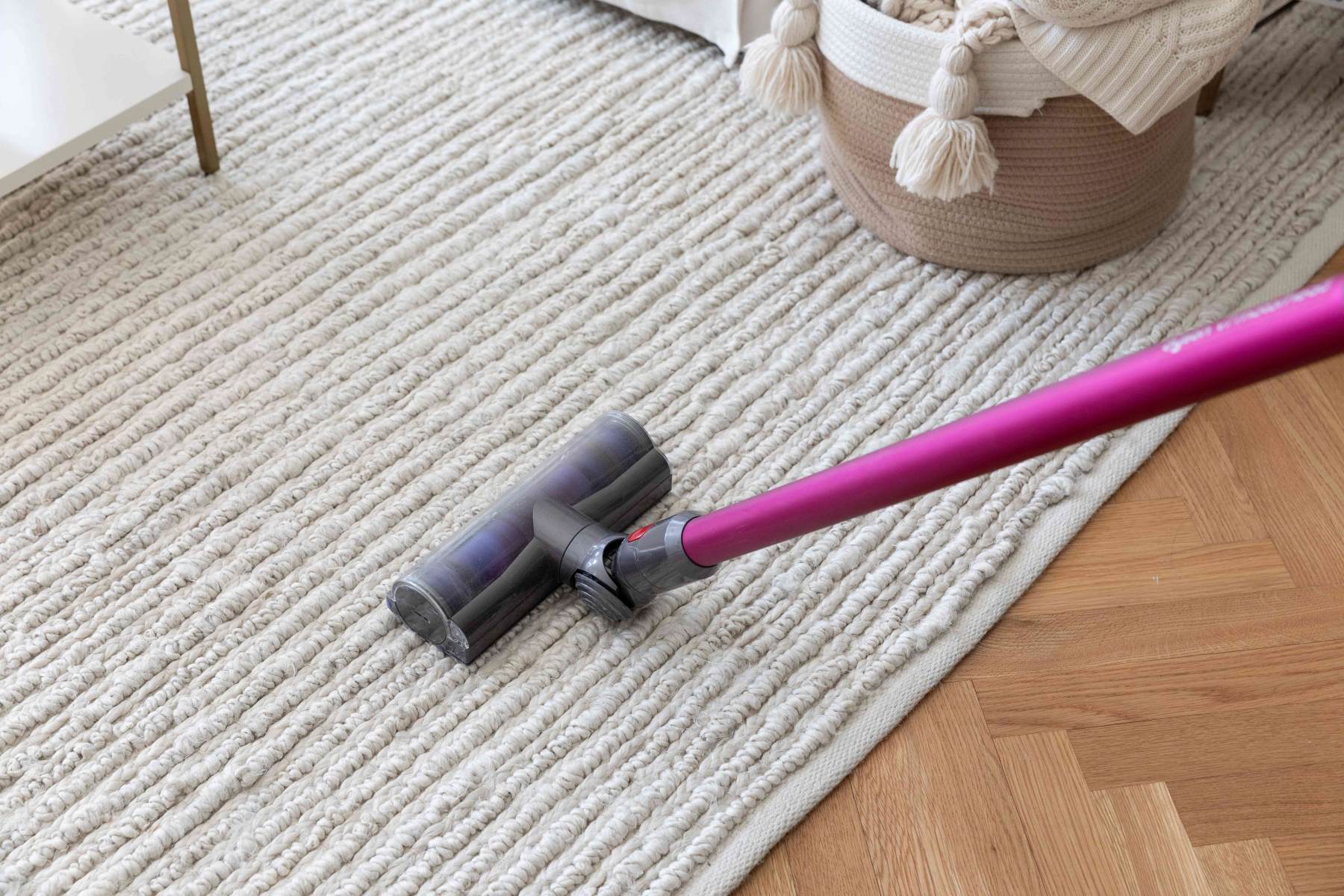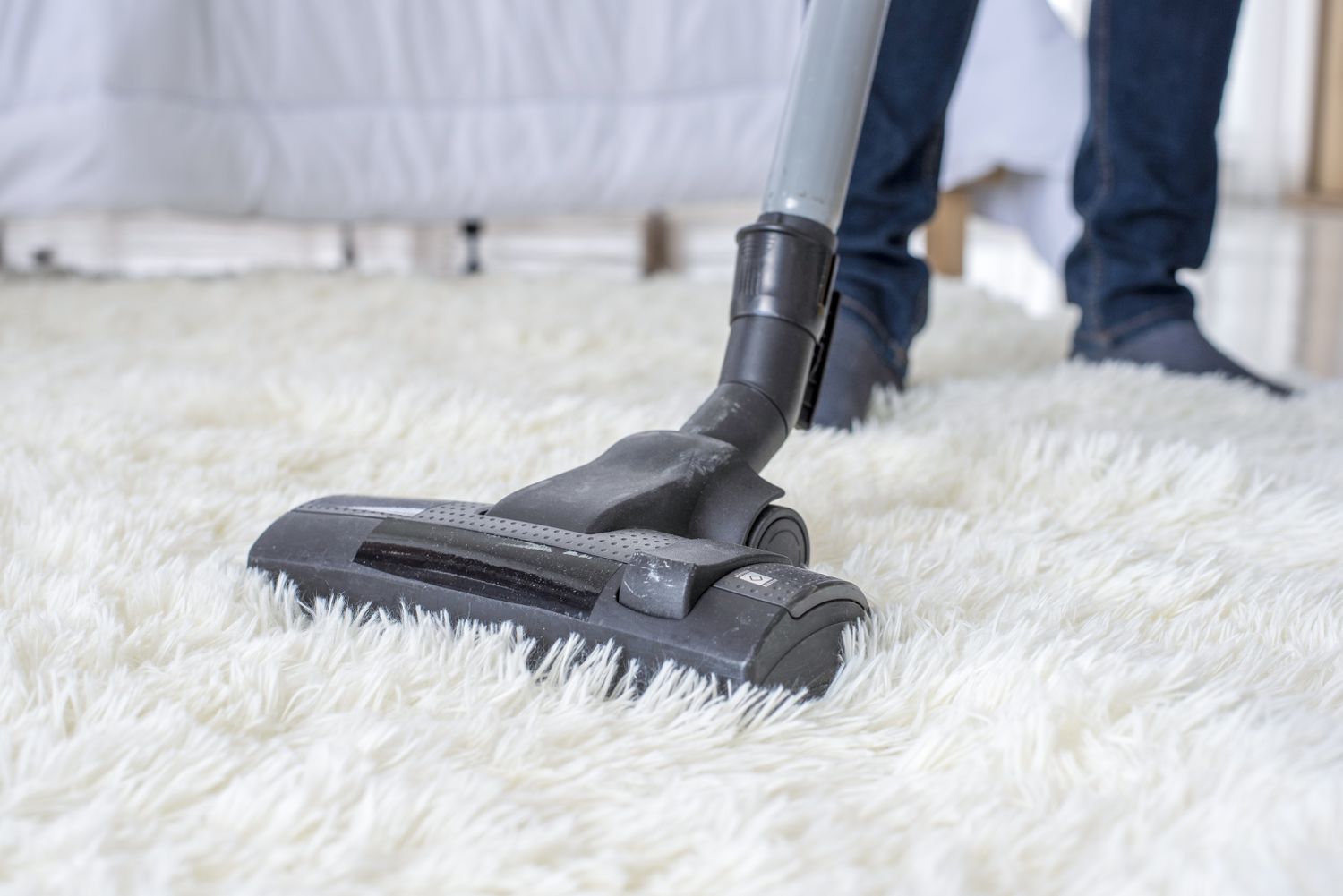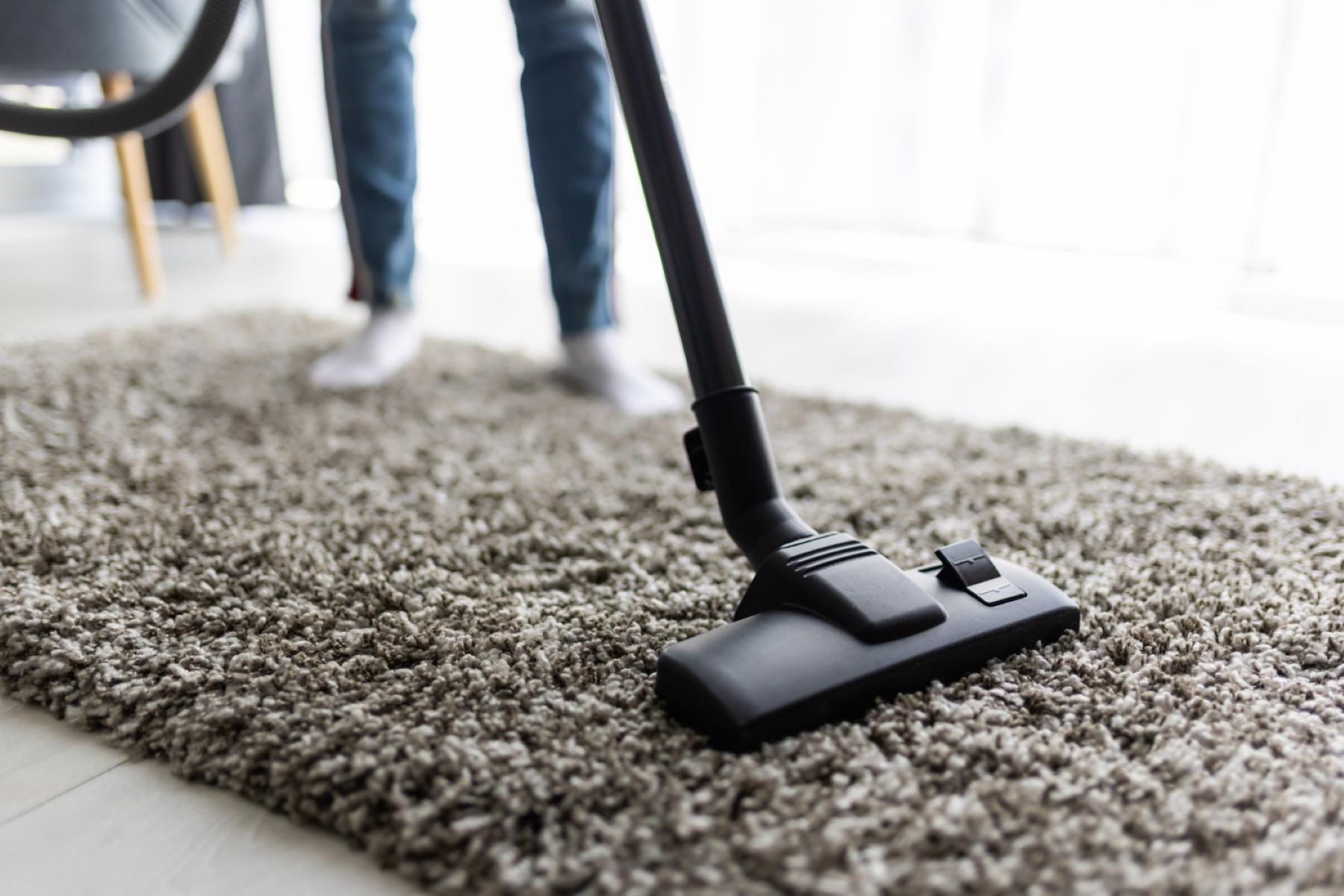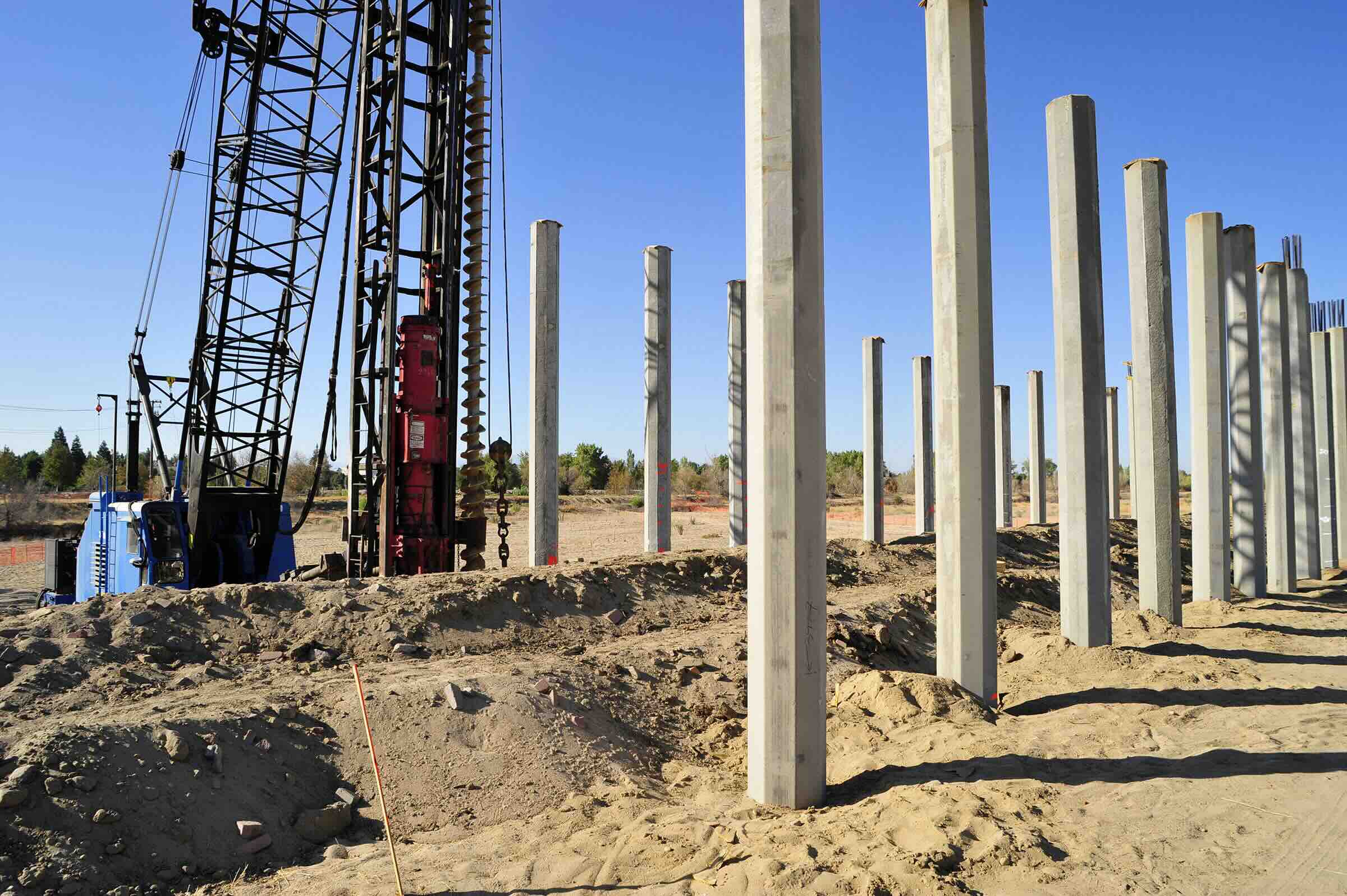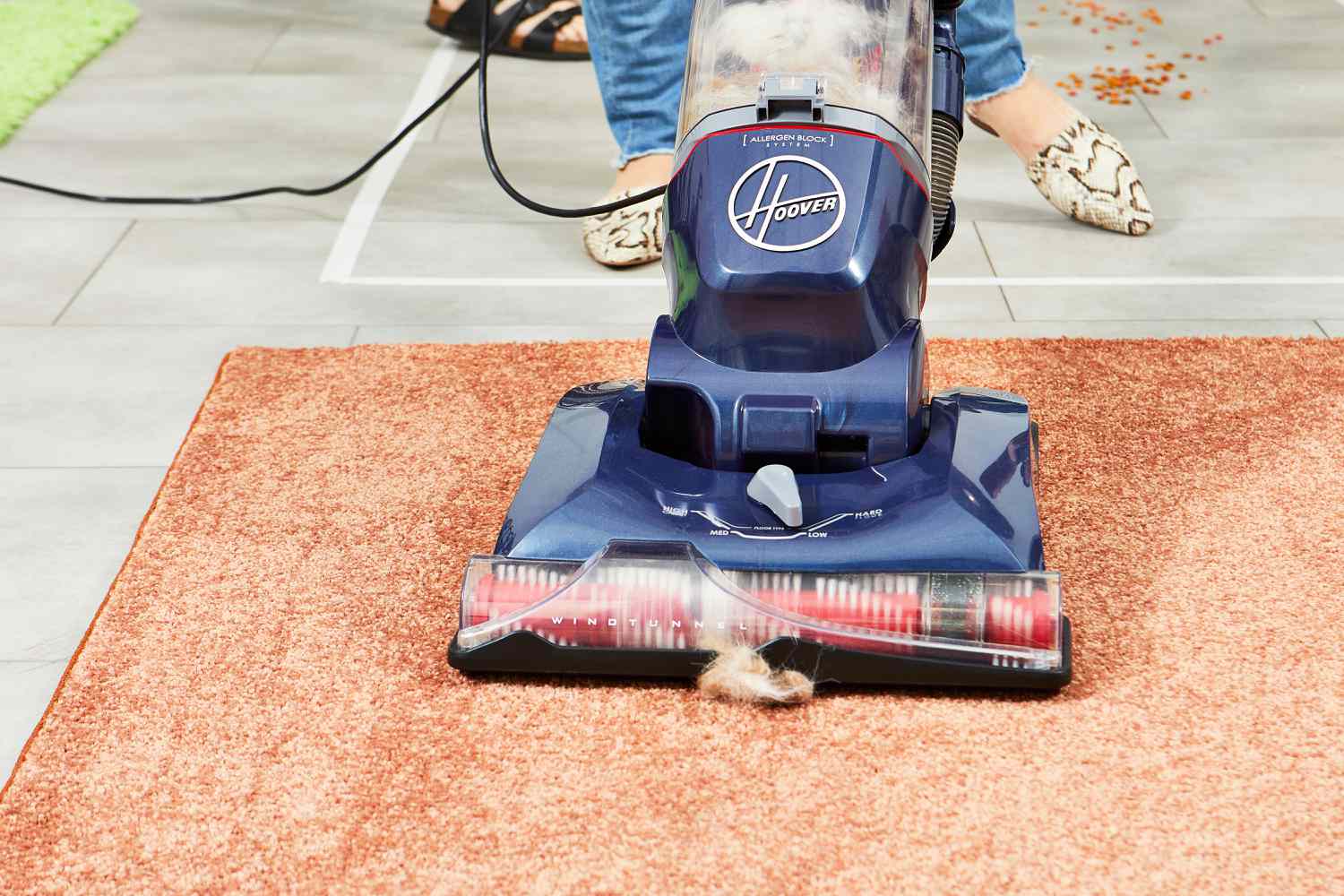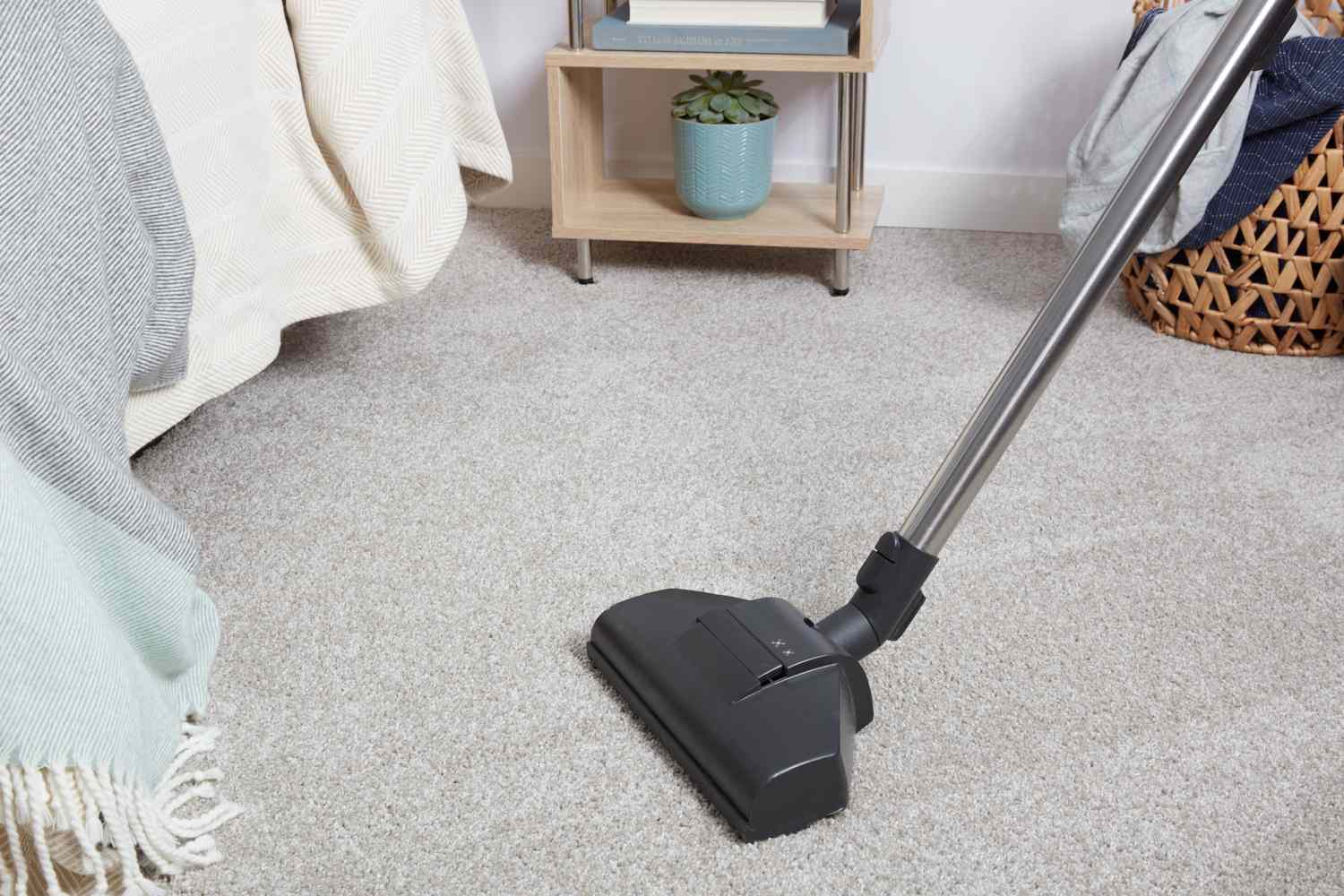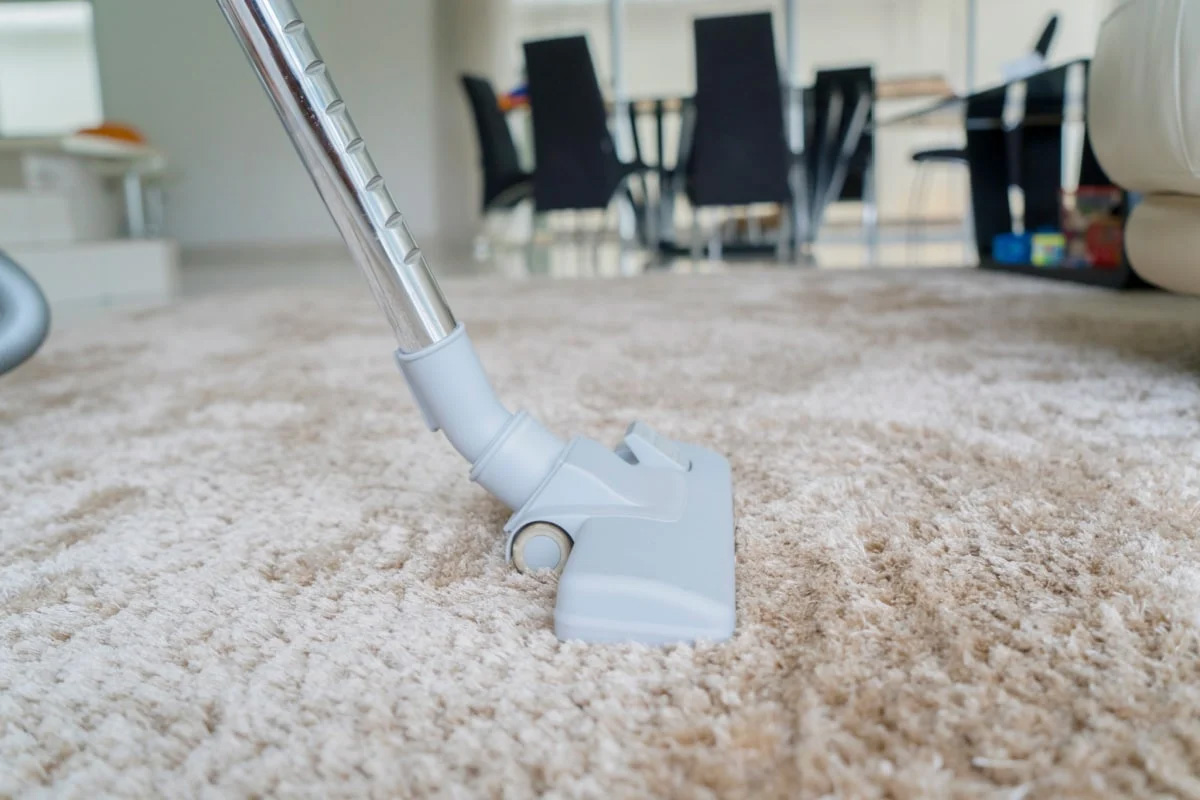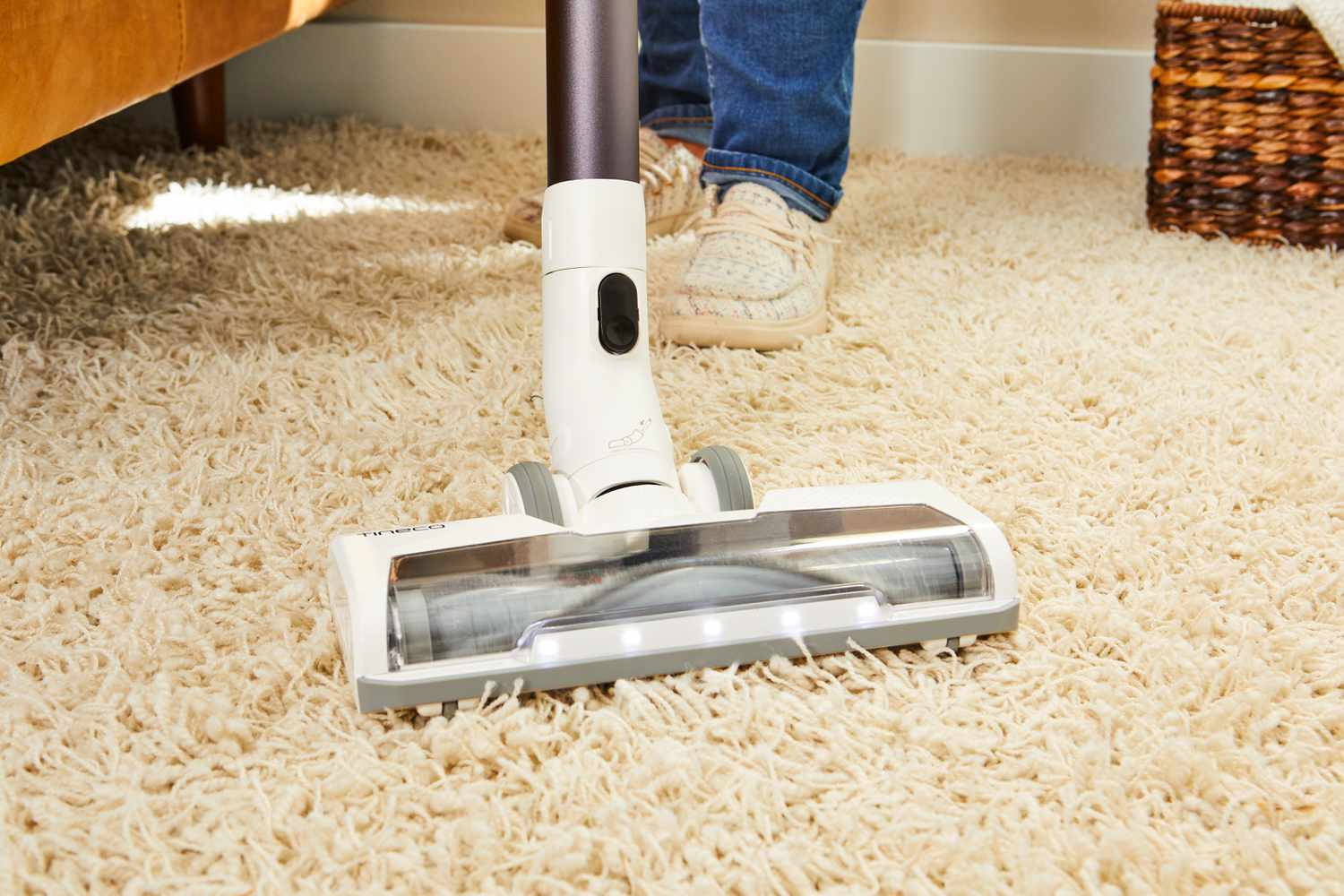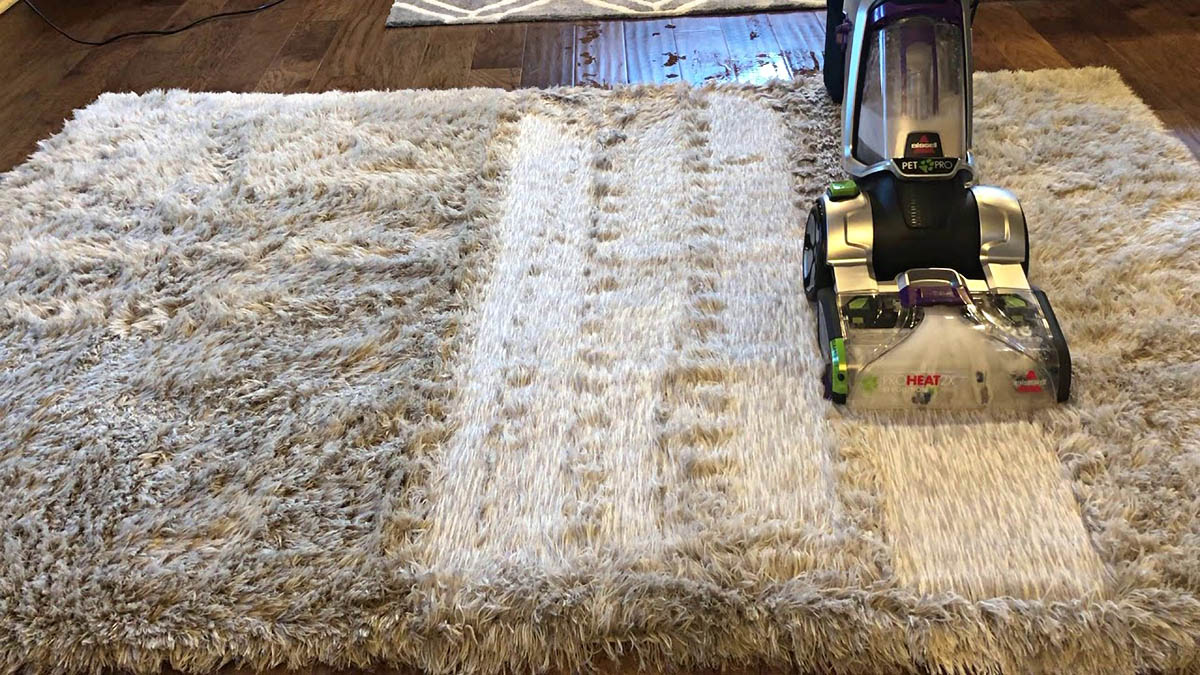

Articles
How To Vacuum A High-Pile Carpet
Modified: January 24, 2024
Looking for articles on how to vacuum a high-pile carpet? Discover expert tips and techniques for effective cleaning in this comprehensive guide.
(Many of the links in this article redirect to a specific reviewed product. Your purchase of these products through affiliate links helps to generate commission for Storables.com, at no extra cost. Learn more)
Introduction
High-pile carpets are a luxurious and plush addition to any home. Their soft fibers not only feel incredibly comfortable underfoot but also create a warm and inviting atmosphere in the room. However, their sumptuous nature also makes them more challenging to clean and maintain compared to low or medium-pile carpets.
Proper vacuuming is crucial to keep your high-pile carpets looking their best and extending their lifespan. Regular vacuuming helps to remove dirt, dust, pet hair, allergens, and other debris that can accumulate within the thick fibers of the carpet. However, using the wrong vacuuming techniques or incorrect attachments can potentially damage the carpet or leave it inadequately cleaned.
In this article, we will guide you on how to effectively vacuum a high-pile carpet, ensuring that you maintain its appearance and longevity. We will discuss the importance of proper vacuuming, how to prepare your vacuum for high-pile carpets, choosing the right attachments, vacuuming techniques, and dealing with stubborn stains and spills. By following these tips, you can keep your high-pile carpet looking fresh and cozy for years to come.
Key Takeaways:
- Proper vacuuming of high-pile carpets is crucial for removing dirt, maintaining appearance, preventing damage, improving air quality, and extending carpet lifespan. Follow specific techniques and use appropriate attachments for optimal cleaning results.
- Regular maintenance, including vacuuming, spot cleaning spills, rotating furniture, and minimizing sunlight exposure, is essential for preserving the beauty and longevity of high-pile carpets. Professional deep cleaning and pet hair removal are also important for comprehensive care.
Why Proper Vacuuming is Important for High-Pile Carpets
Proper vacuuming is essential for high-pile carpets for several reasons. Here are a few key reasons why you should pay extra attention to vacuuming your high-pile carpet:
- Removes Dirt and Allergens: High-pile carpets tend to trap dirt, dust, pet dander, and allergens deep within their fibers. Regular vacuuming helps to remove these particles, preventing them from building up and causing respiratory issues or allergies.
- Maintains Appearance: High-pile carpets often have long, fluffy fibers that can easily mat or flatten if not properly maintained. Regular vacuuming helps to keep the fibers upright, maintaining the carpet’s luxurious appearance and preventing it from looking worn or dirty.
- Prevents Damage: Dirt and debris that accumulate in high-pile carpets can act as abrasive particles, causing friction and wearing down the carpet fibers over time. By vacuuming frequently, you can remove these particles and prevent premature damage to your carpet.
- Improves Air Quality: High-pile carpets can act as filters, trapping airborne pollutants and allergens. Vacuuming helps to remove these contaminants, improving the air quality in your home and creating a healthier environment for you and your family.
- Extends Carpet Lifespan: Regular vacuuming, when done correctly, can significantly extend the lifespan of your high-pile carpet. By removing dirt and debris that can cause damage, you can ensure that your carpet stays beautiful and durable for many years.
It’s important to note that high-pile carpets require a different approach to vacuuming compared to low or medium-pile carpets. The long fibers can make it more challenging to effectively remove debris. Therefore, it’s crucial to follow the right techniques and use the appropriate vacuum cleaner attachments to achieve optimal cleaning results.
In the next sections, we will discuss how to prepare your vacuum for high-pile carpets, choose the right attachments, and employ proper vacuuming techniques to ensure your carpet remains clean, fresh, and beautiful.
Preparing Your Vacuum for High-Pile Carpets
Before you start vacuuming your high-pile carpet, it’s important to ensure that your vacuum cleaner is properly prepared. Here are a few steps to follow:
- Inspect and clean the vacuum: Before using your vacuum on a high-pile carpet, check that it is in good working condition. Remove any clogs or tangled debris from the brush roll and suction hose. Clean or replace the filters if needed to maintain optimal suction power.
- Choose the right vacuum cleaner: Not all vacuum cleaners are suitable for high-pile carpets. Look for a vacuum with adjustable height settings, strong suction power, and a beater brush or brush roll. These features will help effectively clean deep into the carpet fibers.
- Use a clean vacuum bag or empty the canister: A full vacuum bag or canister will limit the airflow and the vacuum’s effectiveness. Empty the canister or replace the bag before you begin vacuuming to ensure maximum performance.
- Check the wheels and attachments: Ensure that the wheels of your vacuum are clean and free of debris. If the wheels are dirty or damaged, they can scratch or snag the carpet fibers. Additionally, select the appropriate attachments for high-pile carpets, such as a soft brush attachment or a powered upholstery tool.
By taking these preparatory steps, you can ensure that your vacuum is ready to effectively clean your high-pile carpet without causing any damage.
In the next sections, we will discuss how to adjust the vacuum height, choose the right attachments, and employ the correct vacuuming techniques for high-pile carpets.
Adjusting the Vacuum Height
One of the most critical factors in properly vacuuming a high-pile carpet is adjusting the vacuum height. Setting the correct height will ensure that the vacuum effectively cleans the carpet fibers without causing damage. Here’s how to adjust the vacuum height for your high-pile carpet:
- Refer to the manufacturer’s instructions: Check the user manual or guide that came with your vacuum cleaner for specific instructions on adjusting the height. Different vacuum models may have different mechanisms for adjusting the height.
- Start with the highest setting: Begin by setting the vacuum height to the highest setting. This prevents the vacuum from digging too deep into the carpet, which can cause the fibers to tangle or mat. Vacuuming at a higher level allows the brush roll to gently lift the carpet fibers, removing dirt and debris without causing damage.
- Gradually lower the height: If the highest setting doesn’t provide sufficient cleaning power, gradually lower the height until you find the sweet spot. Ideally, the brush roll should make contact with the carpet fibers without excessive force. Adjust the height incrementally and test vacuum in a small, inconspicuous area to ensure proper cleaning without damaging the carpet.
- Pay attention to resistance: As you lower the vacuum height, pay attention to any resistance or difficulty moving the vacuum. If the vacuum is difficult to push or the brush roll is stopping, it may be an indication that the height is set too low for your high-pile carpet.
Remember that the ideal vacuum height may vary depending on the length and density of your specific high-pile carpet. It’s best to experiment and find the height that works best for your carpet.
In the next sections, we will discuss how to choose the right vacuum cleaner attachments and employ proper vacuuming techniques for high-pile carpets.
Choosing the Right Vacuum Cleaner Attachments
When it comes to vacuuming high-pile carpets, using the right attachments can make a significant difference in achieving thorough cleaning. Here are some key attachments to consider:
- Soft brush attachment: A soft brush attachment or upholstery tool is ideal for high-pile carpets. The soft bristles are gentle on the delicate fibers while effectively removing loose debris, dirt, and pet hair.
- Crevice tool: A crevice tool is perfect for reaching tight corners, edges, and along baseboards. It helps to remove dirt and dust that tends to accumulate in those hard-to-reach areas of your high-pile carpet.
- Powered brush roll: Some vacuum cleaners come with a powered brush roll attachment designed specifically for deep-cleaning high-pile carpets. This attachment agitates the carpet fibers, loosening and removing dirt and debris with ease.
- Wide suction head: A wide suction head attachment is beneficial for covering a larger surface area. It allows for efficient cleaning of your high-pile carpet, as the wider head can collect more debris in a shorter amount of time.
When selecting attachments, ensure they are compatible with your vacuum cleaner model. Check the manufacturer’s recommendations or consult the user manual to identify the appropriate attachments for your specific vacuum.
Additionally, take note of any special features or settings on your attachments that can enhance performance on high-pile carpets, such as adjustable bristle lengths or height settings.
In the next sections, we will discuss proper vacuuming techniques for high-pile carpets, including vacuuming in multiple directions, cleaning hard-to-reach areas, and dealing with stubborn stains and spills.
Read more: What Is A Pile Carpet
Vacuuming Techniques for High-Pile Carpets
Vacuuming high-pile carpets requires a different approach compared to low or medium-pile carpets. Here are some important techniques to keep in mind for effective cleaning:
- Vacuum in multiple directions: High-pile carpets tend to trap dirt and debris within their deep fibers. To ensure thorough cleaning, vacuum in multiple directions, such as back-and-forth and side-to-side. This helps to loosen and lift the carpet fibers, allowing the vacuum to pick up embedded dirt more effectively.
- Take your time: When vacuuming high-pile carpets, it’s important to move slowly and deliberately. Give the vacuum enough time to agitate the fibers and suction up as much dirt and debris as possible. Rushing through the process may result in less effective cleaning.
- Overlap each pass: To ensure thorough cleaning, overlap each vacuum pass slightly. This ensures that no area of the carpet is missed and allows the vacuum to pick up any remaining dirt or debris from previous passes.
- Change directions: Change the direction of your vacuuming pattern occasionally. This helps to prevent the carpet fibers from matting or bending in one particular direction, ensuring an even and uniform appearance.
- Pay attention to high-traffic areas: High-traffic areas, such as entryways or hallways, tend to accumulate more dirt and debris. Focus on these areas with extra passes to ensure they receive proper cleaning attention.
- Use the proper suction power: Some vacuum cleaners have adjustable suction power. When vacuuming high-pile carpets, it’s generally recommended to use a higher suction setting to effectively remove dirt and debris from deep within the fibers.
By employing these vacuuming techniques, you can ensure that your high-pile carpet receives a thorough and effective cleaning. However, there are some areas that may require special attention, such as hard-to-reach areas and stubborn stains or spills.
In the next sections, we will discuss cleaning hard-to-reach areas, dealing with stubborn stains and spills, and regular maintenance tips for maintaining the beauty and longevity of your high-pile carpet.
When vacuuming a high-pile carpet, use a vacuum with adjustable height settings to ensure the brush or beater bar can reach deep into the carpet fibers for a thorough clean.
Vacuuming in Multiple Directions
When it comes to vacuuming high-pile carpets, one of the key techniques to remember is vacuuming in multiple directions. High-pile carpets have long, plush fibers that can easily trap dirt and debris deep within. Vacuuming in multiple directions helps to loosen and lift the carpet fibers, ensuring a more thorough clean. Here’s how to properly vacuum in multiple directions:
- Start with a clean vacuum: Before you begin, make sure your vacuum is clean and free from any tangled debris. A clean vacuum will ensure optimal suction power and prevent anything from being left behind on the carpet.
- Choose an appropriate height setting: Adjust the height of your vacuum to the recommended setting for high-pile carpets. This will prevent the vacuum from digging too deep into the fibers and causing damage.
- Divide the carpet into sections: Divide the carpeted area into smaller sections. This makes it easier to manage and allows you to focus on one area at a time, ensuring that no spot is missed.
- Start with a back-and-forth motion: Begin by vacuuming in a back-and-forth motion across the section. Make slow, deliberate passes, allowing the vacuum to thoroughly clean the carpet fibers.
- Switch to a side-to-side motion: Once you have completed a few passes in one direction, switch to a side-to-side motion. This helps to agitate the fibers from a different angle, ensuring that all sides of the fibers are cleaned.
- Overlap each pass: Remember to overlap each pass slightly to ensure that no area is missed. By overlapping, you can capture any dirt or debris that may have been left behind in previous passes.
- Repeat in different directions: Continue vacuuming in back-and-forth and side-to-side motions, changing directions with each pass. This ensures a thorough cleaning of the entire section of the high-pile carpet.
Vacuuming in multiple directions helps to prevent the carpet fibers from matting or bending in one particular direction. It also ensures that all sides of the fibers are cleaned, leaving your high-pile carpet fresh and free from dirt and debris.
In the next sections, we will discuss cleaning hard-to-reach areas, dealing with stubborn stains and spills, and regular maintenance tips for maintaining the beauty and longevity of your high-pile carpet.
Cleaning Hard-to-Reach Areas
High-pile carpets can present challenges when it comes to cleaning hard-to-reach areas, such as corners, edges, and under furniture. However, with the right techniques and tools, you can effectively clean these areas and ensure that no dirt or debris is left behind. Here’s how to clean hard-to-reach areas on a high-pile carpet:
- Use a crevice tool: Attach a crevice tool to your vacuum cleaner to reach into tight corners and along baseboards. This narrow attachment allows you to remove dirt and debris that tend to accumulate in these hard-to-reach areas.
- Slide furniture if possible: If possible, move lightweight furniture to access the areas beneath. This allows you to vacuum thoroughly and ensures that no dirt or dust is hiding under the furniture.
- Use a vacuuming wand: Some vacuum cleaners come with a wand attachment that allows you to reach under furniture without having to move it. Extend the wand and use gentle, back-and-forth motions to vacuum the carpet underneath.
- Consider a handheld vacuum: In some cases, using a handheld vacuum may be more effective for cleaning hard-to-reach areas. These portable vacuums are compact and lightweight, making it easier to maneuver and reach tight spots.
- Utilize a brush attachment: If the above methods are not feasible, use a vacuum brush attachment to manually sweep and clean hard-to-reach areas. The bristles of the brush will help loosen dirt and debris, allowing you to vacuum it up more effectively.
- Dust or wipe down surfaces: Apart from vacuuming, it’s also important to dust or wipe down surfaces in hard-to-reach areas. Use a microfiber cloth or a duster to remove any dust or dirt from surfaces like baseboards, moldings, or furniture legs.
By applying these techniques, you can ensure that hard-to-reach areas on your high-pile carpet are thoroughly cleaned and free from dirt and debris.
In the next sections, we will discuss dealing with stubborn stains and spills, as well as regular maintenance tips to keep your high-pile carpet looking its best for years to come.
Dealing with Stubborn Stains and Spills
Accidents happen, and high-pile carpets are not immune to stains and spills. It’s important to address these issues promptly to minimize the risk of permanent damage to your carpet. Here are some steps to effectively deal with stubborn stains and spills on your high-pile carpet:
- Act quickly: The key to removing stains is to act as soon as possible. The longer a stain sits, the more likely it is to set into the carpet fibers. Blot the spill immediately with a clean cloth or paper towel to absorb as much of the liquid as you can.
- Avoid rubbing: When blotting the stain, avoid rubbing it as this can spread the stain and push it deeper into the carpet fibers. Instead, gently blot the area to lift the stain without causing further damage.
- Use a stain remover: There are various commercial carpet stain removers available that are specifically designed for different types of stains. Follow the instructions provided on the product and test it on a small, inconspicuous area of your high-pile carpet before applying it to the stain.
- Make a DIY cleaning solution: If you prefer a natural solution, you can create your own carpet cleaner using ingredients like white vinegar, water, and mild dish soap. Mix a solution of equal parts water and vinegar, or mix a solution of warm water with a few drops of dish soap. Apply the solution to the stain and gently blot with a clean cloth.
- Blot with cold water: For some stains, plain cold water may be sufficient. After blotting up as much of the spill as possible, dampen a clean cloth with cold water and gently blot the stain. This can help dilute and lift the stain from the carpet fibers.
- Consider professional cleaning: If you’re unable to remove a stubborn stain or if you have significant staining throughout your high-pile carpet, it may be beneficial to seek professional carpet cleaning services. Professional cleaners have the expertise and equipment to effectively treat and remove even the most stubborn stains.
Remember, prevention is the best defense against stains and spills. Consider using carpet protectors or applying a stain-resistant treatment to your high-pile carpet to make it easier to clean and prevent staining in the first place.
In the next section, we will discuss regular maintenance tips for your high-pile carpet to keep it looking its best for years to come.
Read more: What Is A Short Pile Carpet
Regular Maintenance for High-Pile Carpets
Regular maintenance is essential to keep your high-pile carpet looking its best and maintaining its longevity. By following these maintenance tips, you can ensure that your carpet remains clean, fresh, and beautiful:
- Vacuum regularly: Regular vacuuming is crucial to remove dirt, dust, and debris that can accumulate within the carpet fibers. Aim to vacuum at least once a week, or more frequently in high-traffic areas, to prevent the buildup of dirt and keep your carpet looking its best.
- Spot clean spills immediately: Act quickly to clean up spills and accidents to prevent staining. Blot the spill with a clean cloth, using a mild cleaning solution or plain water. Avoid rubbing the stain, as it can spread the spill and push it deeper into the carpet fibers.
- Rotate furniture: To prevent uneven wear and crushing of the carpet, periodically rotate your furniture. This distributes the weight and reduces the likelihood of permanent indentations in your high-pile carpet.
- Use furniture coasters or pads: Place furniture coasters or pads under the legs of heavy furniture to prevent indentations and damage to the carpet fibers. These protective pads distribute the weight and reduce the pressure on a specific area.
- Minimize direct sunlight exposure: Prolonged exposure to direct sunlight can cause fading and discoloration of your high-pile carpet. Use curtains, blinds, or window films to minimize UV rays and protect the carpet from sunlight damage.
- Professional deep cleaning: Consider scheduling professional deep cleaning for your high-pile carpet at least once a year. Professional cleaners have the expertise and specialized equipment to extract deep-seated dirt and revitalize the appearance of your carpet.
- Attend to pet hair: If you have pets, their hair can easily become embedded in the high-pile carpet fibers. Use a vacuum cleaner with a pet hair attachment or a brush specifically designed for pet hair removal to keep your carpet free from pet hair.
- Read manufacturer’s guidelines: Each high-pile carpet may have specific care instructions provided by the manufacturer. Refer to these guidelines for specific cleaning and maintenance recommendations to ensure that you are caring for your carpet properly.
By incorporating these regular maintenance practices into your cleaning routine, you can extend the life of your high-pile carpet, keep it looking fresh and beautiful, and maintain a healthy environment in your home.
Overall, taking proper care of your high-pile carpet ensures its continued elegance and durability, providing a comfortable and luxurious foundation for your living space.
Conclusion
Vacuuming high-pile carpets requires careful attention to detail and the use of proper techniques and tools. By understanding the importance of proper vacuuming, preparing your vacuum, adjusting the height, choosing the right attachments, and employing the correct vacuuming techniques, you can effectively clean and maintain the beauty of your high-pile carpet.
Regular vacuuming removes dirt, allergens, and debris, preventing damage and maintaining the appearance of your carpet. Vacuuming in multiple directions helps to loosen and lift the carpet fibers, ensuring a thorough cleaning. Cleaning hard-to-reach areas and dealing with stubborn stains and spills require the use of specific attachments and prompt action to prevent permanent damage.
Additionally, regular maintenance practices, such as vacuuming regularly, spot cleaning spills immediately, and rotating furniture, help to extend the life of your high-pile carpet. Minimizing direct sunlight exposure and scheduling professional deep cleaning on a yearly basis are also crucial for preserving its beauty and longevity.
By following these guidelines and incorporating them into your cleaning routine, you can enjoy the comfort and elegance of your high-pile carpet for years to come. Remember to refer to the manufacturer’s guidelines for specific care instructions and always test cleaning solutions on a small, inconspicuous area before applying them to your entire carpet.
Investing time and effort in keeping your high-pile carpet clean and well-maintained will not only ensure its longevity but also provide a cozy and inviting atmosphere in your home. So grab your vacuum cleaner, adjust the height, choose the right attachments, and start maintaining the cleanliness and beauty of your high-pile carpet today!
Frequently Asked Questions about How To Vacuum A High-Pile Carpet
Was this page helpful?
At Storables.com, we guarantee accurate and reliable information. Our content, validated by Expert Board Contributors, is crafted following stringent Editorial Policies. We're committed to providing you with well-researched, expert-backed insights for all your informational needs.
